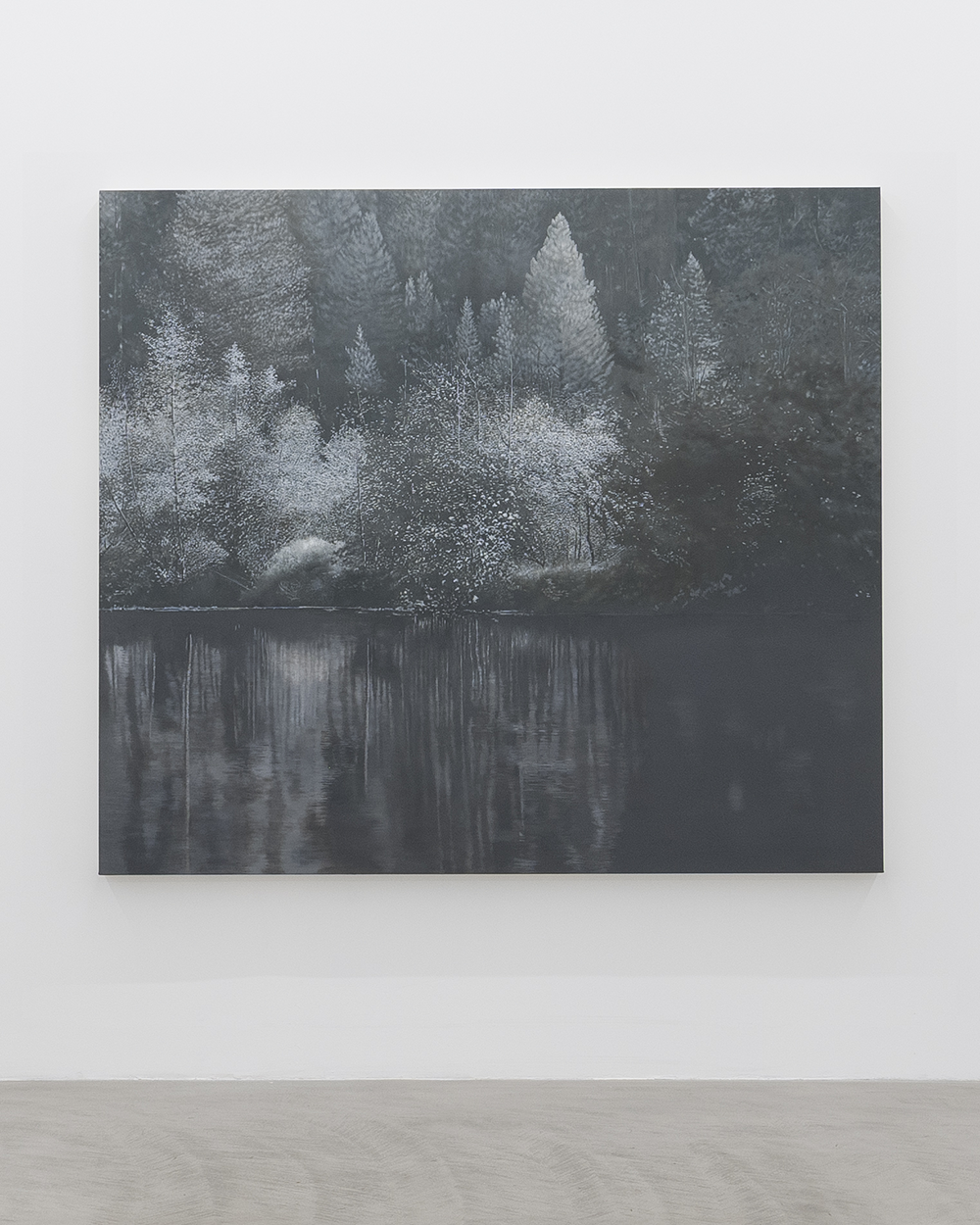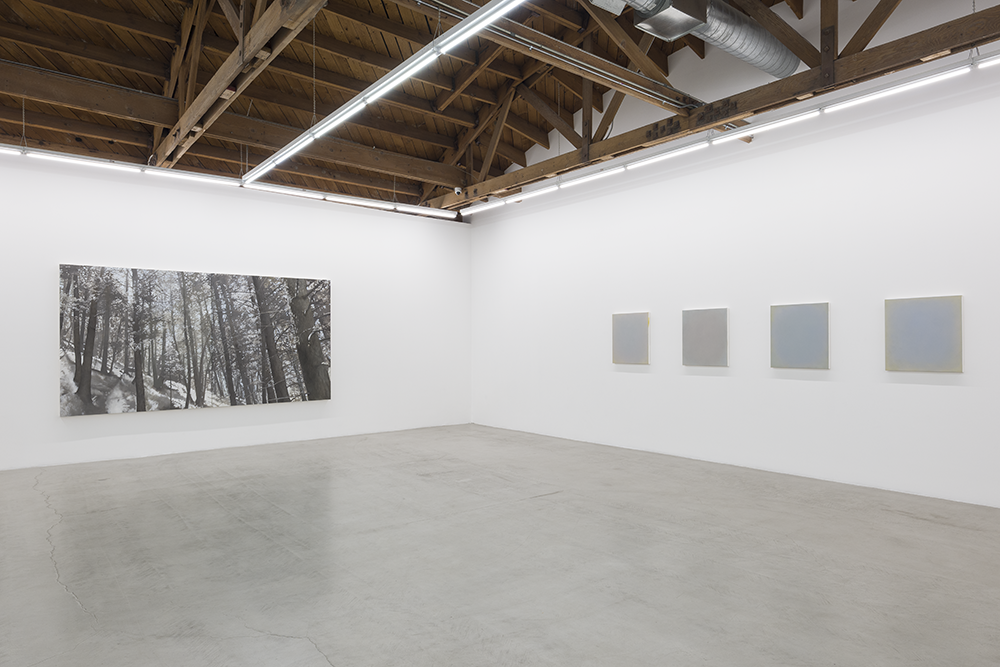Your cart is currently empty!
Anne Appleby Parrasch Heijnen

There was an almost respirational pacing to this show—taken from a slightly more expansive exhibition of the Montana-based artist’s work at the Missoula Art Museum—between variously light or darkness-drenched works on canvas (and/or panel) and the chromatically saturated luminosity of work rendered by photographic means.
The Pond (2021), with a shimmer of silvery foliage whispering through the deeper grisaille of its depicted embankment and dark depths curving deep into the picture space around it, drew the viewer into the subtleties of its rendering. Even the most determinedly monochromatic of Appleby’s canvases reveals abundant chromatic variation and considerable under-painting, however aggressively scraped or flattened. Here, however, the palette veered toward charcoal, slate grays and silvery whites. Foreground foliage, executed in quasi-pointillist style, turned its leaves in a late afternoon or early twilight, rendering the movement of leaves and branches as a kind of effervescence.
As if to answer that whispering pond and its wooded embankment, the sound of water reverberated from across the gallery in a digital video loop with sound, Water Voice (2019–21), fading in from a black-and-white filtered gradient of grays and blacks to color, with the already vividly blue water deepening to sapphire. As the blue deepens, lapping waves are broken by children’s voices, splashing and diving, improvising water sports, and calling their dogs into the water to play fetch. Voices recede, dogs and children fade from view, and blue fades to gray, and finally to white, before fading in again.

The forest takes us further into the woods—a sloping view tumbling towards the viewer and into the right-most section of the (144 inches across) diptych, with pale light piercing the forest canopy to patches of the ground and the darkness falling towards us. Here the painting’s surface grisaille more readily discloses its complex underpainting, with hints of burnt umber or verdigris beneath charcoal black timber and pale gray foliage, and the palest blues where the sky peaks through the most distant trees.
Directly across, Appleby’s triptych (215 in. across) The River (2013) flows not so much into our view as beneath and past us, with the turquoise of its surface scarcely suppressing its complex underpainting of both sunken riverbed debris and reflected woods and sky looming over it.
Mounted on the rear wall of the gallery were four perfect squares (26 x 26 in.) from Appleby’s 2021 “First Light/Last Light” series. Their pleasures multiply on approach, both in the canvases individually and the transitions between them. Close up, the “light” of palest yellows and ambers seemed to seep from the edges while deeper amethysts and blues pooled into midsections.
Directly opposite the First Light/Last Light canvases was a small kneeling figure in fired clay, Untitled (2021)—feminine in contour, but with articulation suppressed; conceivably reverential, but expressing acceptance and resistance in equal measure. Informed and inspired by the natural world, Appleby’s work is also suffused with latency, variation, potentiality—evoking a sinking world that may nevertheless rise and push back.